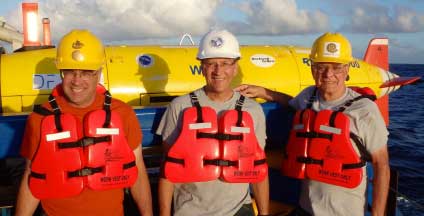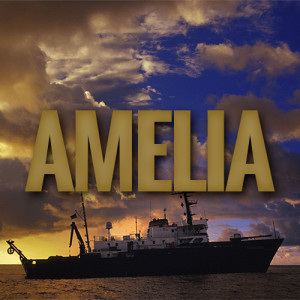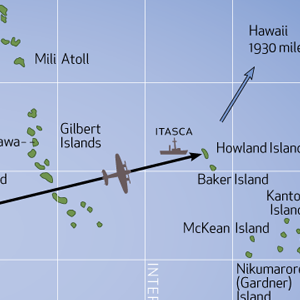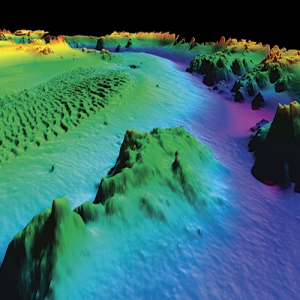Central Pacific Edition
CARC Tackles Amelia
Rockwell Collins Engineers Help Solve the Mystery
As I look back on Rockwell Collins’ participation in the Earhart Discovery project I cannot believe it has been 18 years in passing. In October 1998 Collins Radio was then a division of Rockwell International. That’s when I received a phone call from my Defense Communications Vice President, Bob Chuisano, asking me if the Collins Amateur Radio Club (CARC) would like to take a look at the HF (high frequency) communications of Amelia Earhart’s last flight. Bob knew I was president of the Club. The guidance he provided was that all engineering labor would be on a voluntary basis, but that the Club could use the Company’s assets including computers and software.
At that time Nauticos thought that we might need one to three hours to be able to tell if she was headed towards or away from the island. By February 1999 we were on our journey. None of us could have anticipated what was going to occur over the years to follow!
I started by calling up the hams (amateur radio enthusiasts) that I knew in the HF communications area to see if they would like to participate in an Earhart communications analysis. My first call was to our HF Systems guru, Rod Blocksome (KØDAS). And it grew from there. The initial team included:

Tom Vinson (NYØV): Program Management, Advanced Data Links.
Rod Blocksome (KØDAS): HF Systems.
Dan Roesler (WDØHOJ): HF Propagation.
Roger Hatcher (WBØOMY): Antenna Design & Modeling.
Charley Snodgrass (KCØCD): Avionics Software, Navigation.
Don Grimm (WAØWJM): Avioncs, Navigation.
After I handed out the ship’s logs and the team convened to study the Earhart communications their first response was “It can’t be done!” I recall that I said “So that’s it? We go back to Nauticos and tell them it can’t be done?” Their answer was “Well, let’s think about it some more.” What was encouraging to me is how the team changed our thinking about the problem. We set aside the idea that it was impossible and instead asked “If it were possible, how would we do it?” That led us to start reviewing what information we knew and what we did not know. And for the information we did not know, how could we obtain it?
That is how we ended up recording simulated Amelia transmissions, finding an AR-60 (CGR-32) receiver in New York and driving there for tests. Driving to Canada for radio tests. Flying out over the Atlantic off Cocoa Beach at 1,000 feet altitude in the Rockwell Collins Cessna 206… twice. Traveling to the Pima Air Museum in Tucson to measure the L10A’s antenna impedance and conduct visibility analysis. And we cannot forget creating field tests on a 1/12th scale model Electra in an Iowa cow pasture and with a Beech 18 Tri-gear in Ankeny, Iowa to measure the antenna pattern on a cold 7 degree day in winter.
That three hour “look” became over 4,000 engineering hours involving over twenty radio amateurs from all across the country, two expeditions, over 180 STEM educational presentations, and 18 years. And we’d do it all over again if given the choice.
— Tom Vinson
Operations Update
It’s Groundhog Day. Another successful launch, REMUS flawlessly collecting sonar imagery, and a safe and uneventful recovery. Whether it happens to be the middle of the day or the middle of the night, it makes no difference. We don’t take for granted the skill and professionalism of all those on the deck, the crane, and the bridge that is tested every time. We can look forward to Groundhog Week just ahead.
The re-supply mission is on! Having experienced problems in past missions that required us to return to port, we made plans this time to have critical items brought to us if needed. We have had some unusual flooding of glass spheres used for transponder flotation. Though we have a working supply and continue to operate, we have chartered a vessel from Honolulu to bring more transponders and glass spheres out to us to ensure we can continue to survey at top efficiency. The sailing vessel Machias, an 82 foot schooner normally engaged in top tier vacation charters, will take a cargo delivery job for us. The ship is preparing for sea now in Honolulu, and will take about 9 days to reach us. We’ll be looking for her on or about March 21st.



